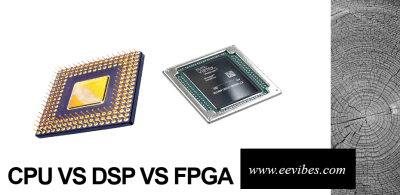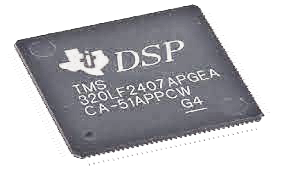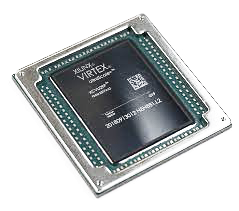
CPU vs DSP vs FPGA
There are many uses for different kinds of processors, such as field-programmable gate arrays (FPGAs), digital signal processors (DSPs), and central processing units (CPUs). Because every processor type has pros and cons of its own, the best choice for a particular application will depend on the specifics of that program.
In this blog, we’ll compare and contrast DSPs, FPGAs, and CPUs to help you choose the best processor for your application. In addition, we will give some instances of apps that frequently make use of each kind of processor.
What is CPU?
The CPU, which is a computer’s central component, acts as the “control center.” Operating system and software on a device are managed by a complex group of electronic circuitry called the CPU, also referred to as the “central” or “main” processor. In most cases, the CPU receives, processes, and executes instructions from the hardware and software programs on the device.
In order to transform data input into more useful information output, the CPU performs arithmetic, logic, and other operations. Many CPUs have multiple processing cores, though at least one must be present. Twelve processors total, for example, are present in a server with two hexa-core CPUs.

What is a Digital Signal Processor (DSP)?
A Digital Signal Processor(DSP) is generally used to filter and compress analog signals while they are in transit, as well as to detect faults. It is a specific kind of signal processing that can be performed by a digital signal processor or a device that can perform similar functions and processing algorithms that are specific to DSPs. Usually, DSP starts with the conversion of an analog signal into a digital signal and then applies signal processing methods and algorithms. For example, DSP can be used to reduce noise and distortion in audio streams. Among the many applications for DSP are audio signal processing, speech recognition, digital image processing, and biomedicine.

What is FPGA?
FPGAs are semiconductor devices based on a matrix of programmable logic blocks (CLBs) connected by programmable interconnects. FPGA devices include memory and logic that can be configured. Depending on the requirements, a generic FPGA can be configured to support and operate a range of applications. The modular nature of FPGA designs allows the end-user to build a variety of hardware designs to ensure that the FPGA is compatible with specific systems. Programmers or end users can implement the hardware design using hardware description languages such as SystemC, VHDL, and Verilog HDL.

CPU vs DSP vs FPGA Features
CPU Features
- After being retrieved from main memory, data is sent to the CPU via the processor’s small cache.
- Multiple cores are a feature of modern processor designs. Cache memory is the only component of these distinct cores.
- GHz or MHz are common units of measurement for CPU speed. A processor with a higher frequency completes a task more quickly.
- Two logical cores that operate in parallel make up the physical unit. The whole process quickens with an increase in core count.
- Compared to single-core processors, multi-core CPUs have greater bandwidth.
DSP Features
- Digital signal processors are primarily designed to make repetitive and computationally intensive tasks easier.
- Most digital signal processors are capable of swiftly transferring enormous amounts of data to memory and have robust data routes.
- In order to increase hardware effectiveness, these processors provide unique instruction sets.
- Two essential features of digital signal processors are fast multiply-accumulate units and a data pipeline with multiple-access memory layouts.
- Using pipelines usually improves the performance of the processor. As a result, pipelining is now utilized by most processors; however, pipelining will significantly increase programming difficulty as speed is increased.
FPGA Features
- Extremely intricate.
- Enhanced incorporation
- Do not deal with ASICs.
- It’s a real-time, online test.
- There is a RAM block on several FPGAs.
- dependable and densely packed
- The FPGA’s small physical size and PLD can work together.
- Programming is also extremely flexible.
Here is a table that summarizes the key differences between CPUs, DSPs, and FPGAs:
| Feature | CPU | DSP | FPGA |
| Purpose | General-purpose | Digital signal processing | Customizable |
| Applications | Devices that need to do a range of jobs include personal computers, servers, and other hardware | Other applications that call for quick digital signal processing include audio and video processing | Specific applications |
| Features | Fast ALU, multiple parallel data paths | Special features for digital signal processing | Configurable logic |
| Speed | Varies | Typically faster than CPUs for digital signal processing tasks | Varies depending on the application |
| Cost | Varies | Typically more expensive than CPUs | Varies depending on the application |
CPU vs DSP vs FPGA: Advantages and Disadvantages
Advantages and Disadvantages of CPU
Advantages of CPU
- The central processing unit (CPU) is a computer’s brain and heart.
- It slides neatly into the motherboard’s slot and is small.
- It processes mathematical and business data faster.
Disadvantages of CPU
- Inadequate parallel processing that makes it impossible to handle large jobs requiring millions of similar actions.
- CPU advancement is also progressing slowly.
- It is incompatible with certain systems and software; for instance, software made for an x86 Intel processor cannot be run on an ARM CPU.
Advantages and Disadvantages of DSP
Advantages of DSP
- It is possible to cascade digital systems in DSP without running into loading problems.
- Digital circuits can be swiftly and affordably duplicated in large quantities in this way.
- Component value tolerances are less of a problem for digital circuits.
- Digital signals can be transmitted conveniently because they can be processed offline.
- The operations involved in digital signal processing can be changed by updating the program of a digital programmable system.
- With digital systems, accuracy control is simpler than with analog systems.
- Complex signal processing algorithms can be constructed with DSP technology.
- Digital signals can be stored on magnetic media, like magnetic tape, with ease and without compromising the signal’s reproduction quality.
Disadvantages of DSP
- DSP requires ADC and DAC modules because it needs a reconstruction filter after the DAC and an anti-aliasing filter before the ADC.
- Due to its faster signal processing speed and greater internal hardware resources overall, DSP uses more power than ASP.
- The proper ICs must be chosen for the task because DSP chips are very costly.
- DSP requires more bandwidth in order to transmit the same data as ASP.
- There is a limit to how much data can be transferred, even though it is possible to increase the bit rate beyond that. Because every DSP has a different hardware configuration and set of software instructions, DSP programming expertise is required. As a result, only highly skilled engineers are able to service the machinery.
Advantages and Disadvantages of FPGA
Advantages of FPGA
- Non-Recurring Expenses (NRE): NREs are frequently associated with ASIC designs; however, in this case, there are none. FPGA is lacking this. FPGA tools are reasonably priced.
- Less complicated design process: This is because the majority of the routing, placement, and timing are handled by software. Less manual labor is required. The FPGA design process does away with the complex and time-consuming place and route, timing analysis, and floorplanning.
- More predictable project cycle: The FPGA design flow eliminates potential re-spins, wafer capacities, etc. of the project because the design logic is already generated and verified in the FPGA device.
- Field reprogramability: Your software can be uploaded instantly over a remote connection in a new bitstream. ASICs can be as expensive as $50,000 and require four to six weeks to perform the same modifications that an FPGA can complete in a few minutes. FPGA costs can range from a few dollars to many hundreds of dollars or more, depending on the hardware specifications.
- Reusability: The ability to reuse FPGA is one of its main advantages. Before the design is implemented on an ASIC, it can be built as a prototype on an FPGA and verified for nearly exact results. Should a design error arise, adjust the HDL code, generate a bit stream, program the FPGA, and conduct an additional test. It is possible to dynamically and partially reconfigure modern FPGAs.
Disadvantages of FPGA
- FPGA uses a higher amount of power. You have no control over the optimization of power.
- You have to utilize the resources on the FPGA. FPGA thereby limits the size of the design.
- Ideal for production on a small scale. The cost per product increases with quantity when compared to ASIC implementation.
CPU vs DSP vs FPGA Applications
CPU Applications
- Servers: Servers are computers that are used to process and store data. They use CPUs. Servers can handle multiple requests at once because they often have a large number of CPUs.
- Smartphones: CPUs are used by smartphones. Smartphone CPUs can still run most programs, but they are frequently not as powerful as desktop or laptop CPUs.
- Tablets: CPUs are also utilized by tablets. In general, tablet CPUs and smartphone CPUs are similar.
- Cars: CPUs manage the engine, transmission, and other systems in automobiles. Even though car CPUs often have less processing power than other CPU types, they can still manage complex calculations.
- Appliances: Microwaves, refrigerators, and washing machines are examples of appliances that contain CPUs. Even though appliance CPUs frequently have less processing power than other CPU types, they are still able to control the appliance’s operations.
- Medical equipment: Two examples of devices that use CPUs are pacemakers and MRI machines. Medical device CPUs are often very robust and reliable because they have to be able to perform critical tasks consistently.
- Industrial robots: To perform tasks like welding, painting, and assembly, industrial robots employ CPUs. Industrial robot CPUs are often incredibly powerful and precise because they have to be able to perform these tasks accurately and reliably.
DSP Applications
- Used during sampling to perform up- and down-sampling
- Correlation and convolution processing in the temporal domain
- Fourier analysis, windowing, and frequency analysis
- Audio and image processing
- ECG, diagnostic imaging (including ultrasound, CT, MRI, and other types),
- Medical picture analysis, archiving, and retrieval
- Regulation and oversight of the procedure
- Sonar and Radar
- Collecting, documenting, and evaluating seismic data
- Compression of voice and data
- Filtering system design for FIR and IIR filters
FPGA Applications
- ASIC Prototyping: Fast and accurate SoC system modeling and embedded software verification are provided by FPGA-based ASIC prototyping.
- Data Center: Designed to support high-bandwidth, low-latency servers, networking, and storage applications in order to optimize the value of cloud installations.
- High Performance Computing and Data Storage: Solutions for Network Attached Storage (NAS), Storage Area Networks (SAN), servers, and storage appliances that are designed to provide high-performance computing and data storage.
- Industrial: AMD FPGAs and targeted design platforms for Industrial, Scientific, and Medical (ISM) enable higher levels of flexibility, faster time-to-market, and lower overall non-recurring engineering costs (NRE) for varied applications, such as industrial imaging and surveillance, medical imaging equipment, and industrial automation.
- Medical: A variety of computing, display, and I/O interface requirements for diagnostic, monitoring, and therapeutic applications can be met by the Virtex FPGA and SpartanTM FPGA families.
- Consumer Electronics: A few examples of next-generation, fully functional consumer applications that can be made possible by affordable consumer electronics solutions are converged phones, digital flat panel displays, information appliances, home networking, and residential set-top boxes.
How to Choose the Right Processor?
The following considerations should be taken into account when selecting the optimum processor for your application:
- The application’s unique specifications
- The application’s performance requirements
- The application’s need for flexibility
- The processor’s price
The long-term requirements of the application must also be considered. For example, if you think the application will need to change in the future, you might want to go with a more flexible processor, like an FPGA.
Also, you can check Ampheo Electronics to have a better understanding of CPU, DSP, FPGA and even more.
Conclusion
We have contrasted and compared CPU, DSP, and FPGA in this blog. We’ve talked about the things to think about when selecting the best processor for your needs. Additionally, we’ve included a few instances of typical applications for each kind of processor.